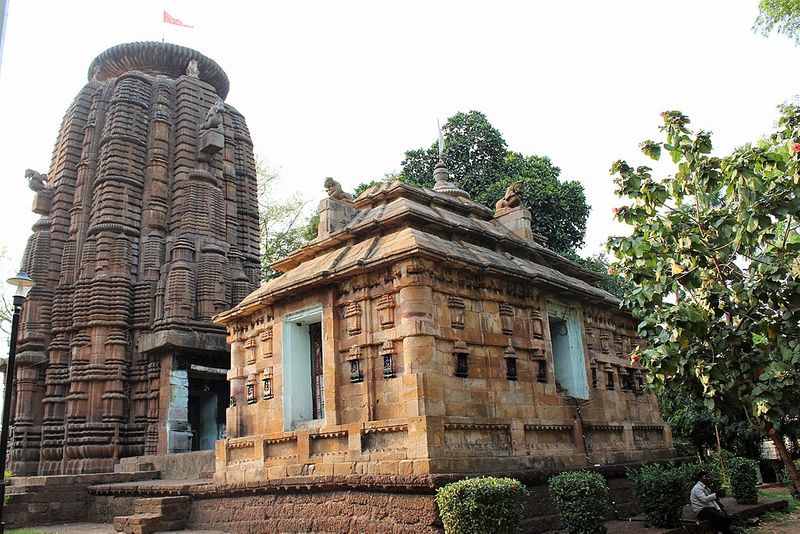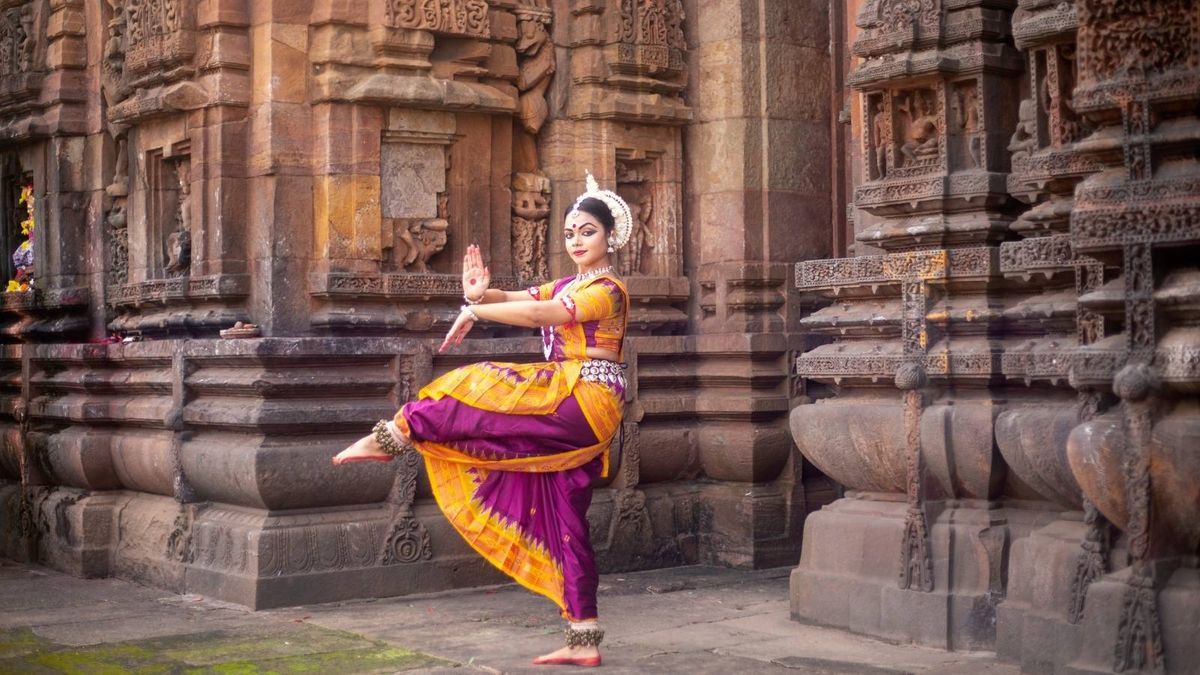I first went to Bhubaneswar about thirty years ago on a vacation with the family and I recall being impressed by its beautiful roads and large patches of greenery. The second time, about a decade ago, I was with a baby and a husband, traversing the holy trio of Konark-Puri-Bhubaneswar, and once again I had noticed how the city was still open, green, and beautifully maintained. I had wanted to focus on Bhubaneswar both times but each time it was just a transit point to other places. And so, when I got the opportunity to visit Bhubaneswar last month, I couldn’t resist. That it would be a solo trip was a bonus.
Cultural heritage in everything old and new

Dark clouds and a gentle sea breeze welcome me to the compact yet quaint airport named after the most influential leader of the state, Biju Patnaik. The drive to my hotel, the newly opened Welcomhotel Bhubaneswar, is short and scenic: I see wide roads lined with small colourful homes, fresh produce piled high on the pavements, locals buying fresh catch of the day, and children in uniform cycling to school. All public walls are painted in colourful murals that depict Odisha’s age-old tradition of art and crafts; beautiful Oriya lettering adorns the facade of many shops and homes.
I am only getting used to the city’s architectural heritage unfolding in front of me when the driver announces our arrival at the hotel. “Nothing in Bhubaneswar is more than 20 minutes away,” my host, Samir Ghose, also the general manager at the hotel, chuckles when I tell him excitedly about my quick ride. As I bite into the delicious chenna poda offered by Samir’s team and check in to my beautiful suite, I notice how the place is inspired by the city and its rich culture.
Subtle elements throughout the property reflect Bhubaneswar’s architectural heritage—a temple-style porch with a slanting roof, traditional sandstone sculptures with elephant and lion at the entrance, a Pattachitra on the wall inside depicting the tree of life, a chandelier in the lobby reflecting the centuries-old art of silver filigree, a cluster of lights representing temple spires, and decor pieces inspired by temple bhog vessels. The most exquisite however is the installation on the façade depicting an elephant composed of dancers in various traditional dance postures—also a traditional craft form.
Spiritual sojourn in the old town

“Bhubaneswar means the place Shiva descended from heaven,” my guide Firoj tells me as we stand inside Rameswara Temple complex in the old city. “This is often considered the city of Lord Shiva,” he adds. Interestingly, even though the temples in the complex are named after Lord Rama and his three brothers, the deity inside each is Shiva—a feature I later discover in most temples of the city. “The temples here date back to the 5th and 6th century and are built in the Kalinga style,” Firoj tells me. He also shows how these temples follow the shape of the human body: the crown of the temple is like the head, the gap between the town and spire is the neck, and the spire, with it curvilinear shape, resembles the shoulders. The small, single-chambered temples bear exquisite carvings of animals, humans, and celestial beings on the outside. Every sanctum has a priest, and locals—even at this early an hour—stream in non-stop. Far in the distance, a loudspeaker plays Oriya devotional songs.

Before Hinduism took over, Buddhism had a great influence on the region. Modern-day Bhubaneswar is close to Dhauli, the spot where Ashoka had realised the futility of war and gave up everything to embrace Buddhism. I reach Dhauli, the oldest centre for Buddhism in the state, expecting it to be filled with tourists, but am pleasantly surprised to find it all to myself. A small flight of stairs leads me to a landing, on one side of which is a small temple; a large stupa towers on the other. While the place itself is 2,500 years old, these two structures were built in 1972 by the Japanese. The carvings on the stupa depict the life of Buddha and two golden lions overlook the valley. The murals are exquisite and the view beautiful, but what strikes me most is the sense of peace here. It feels as though there is a higher energy present around me.
Handcrafted treasures of local markets
There is more to Bhubaneswar than the temples and heritage of course, and my favourite is its bazaars. The city is alive with markets of all kinds — small marketplaces selling homeware, posh high streets offering the latest brands, and quaint showrooms in shaded lanes showcasing Odisha’s myriad arts and crafts. After picking up souvenirs for friends and artefacts from the state emporium, I head to Mehar’s—a decades-old saree shop opposite the imposing brick coloured Ram Mandir. It has been recommended by a dear friend’s mother who has lived here all her life as a must-visit. I am certain that I do not need another sari but I go there nonetheless.

Mehar’s turns out to be a treasure trove of saris, handwoven locally in traditional waves and patterns like ikkat, bomkai, sambalpuri. There are all patterns and colours one thinks of in silks and cotton so fine that I have not seen in years. Looking at my excitement the elderly salesman explains the process of making these saris and how these designs often die with their makers. He also nudges me to pick a few lest the prices rise and guides me to the nearest filigree shop to buy matching silver from. By the time I leave Mehar’s, it is already dark and my plan of covering the state museum has gone kaput. But the filigree shop is open, as is the food street, and both as important to me. As for the museum, tomorrow is another day and I have all of it to discover the city.
Getting there
Bhubaneswar is connected to all major metros by air and rail. It has great roads and is good for road trips from Jharkhand, Bengal, and even Telangana and Andhra Pradesh.
Stay
Welcomhotel Bhubaneswar (book here) is a smart new property close to the airport that also arranges for cultural tours of the city, local food experiences, and reliable guides. Trident Bhubaneswar (book) and Mayfair Lagoon (book) are the other premium properties in the city.




